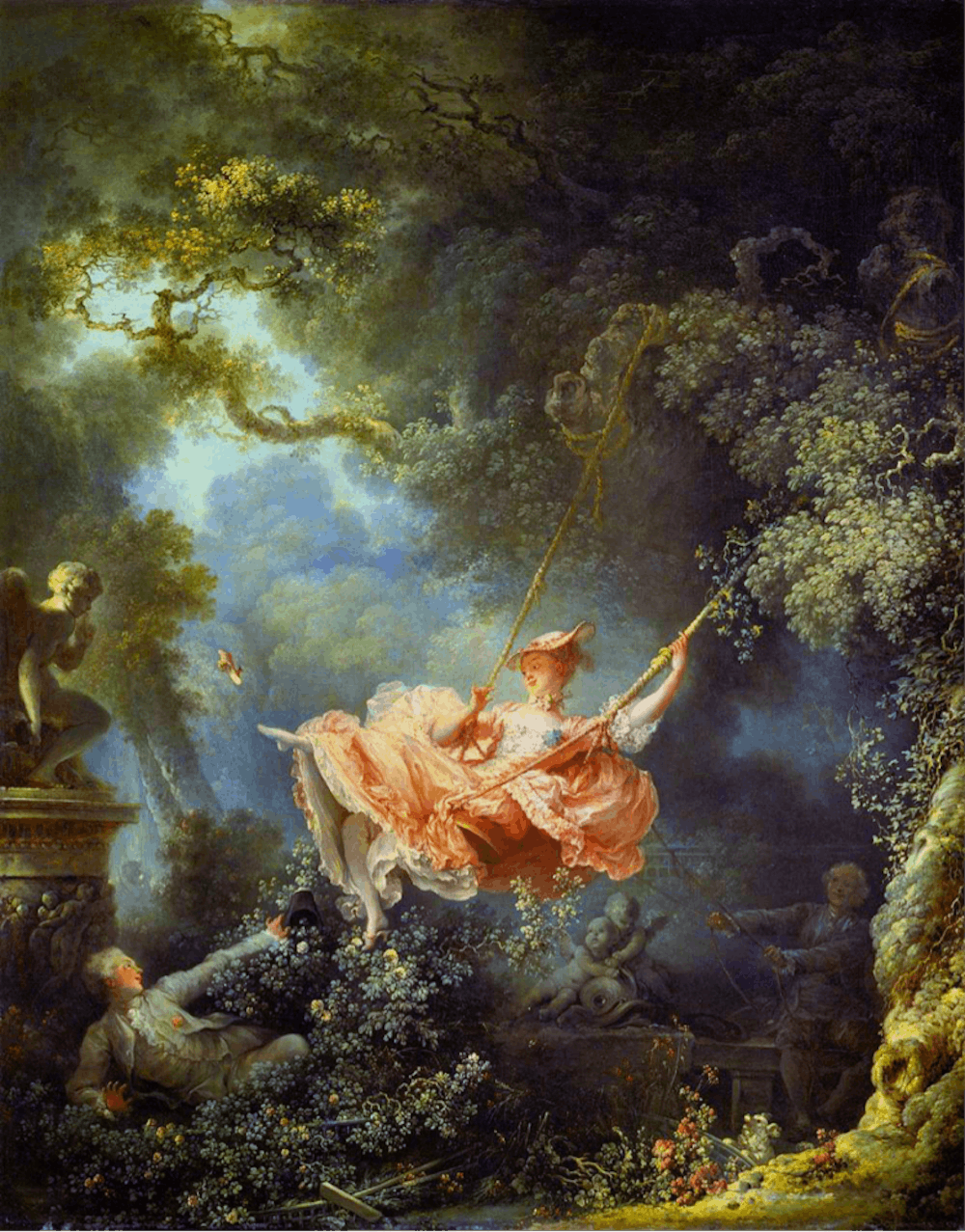“They’re Singing Ro…co…co, Ro…co…co, Rococo”
Excuse me for my awkward Arcade Fire reference, but every time I see this period in art, that song pops into my head. Rococo, aside from being Arcade Fire’s muse, is also my most favorite period of art history. The frivolousness and ridiculousness of it all holds a very special place in my heart.
http://youtu.be/az_2oiccZNo
Rococo art began in Paris during the reign of King Louis XV (1723-1774). It was a short period in art, only having lasted a few decades. It was deemed out-of-fashion by the time the 1760s rolled around. Rococo is primarily a style used for interior decorating, but it eventually had a far-reaching effect. It ended up influencing the architecture, painting and styling of the time. Rococo is characterized by the curvilinear decorative arts, ostentatious ornamentation, complicated patterns full of curlicues and flowers and the use of pastels. Rococo art, as many art historians will agree, was for all intents and purposes completely for decorative and nonfunctional uses. The aristocracy flocked to it. It only complemented their move from Versailles to Paris.
A popular type of painting, the fete galante, epitomizes this period of history. The fete galante is a depiction of lovers gallivanting in a romantic outdoors setting. As well, there are many different types of intrigue paintings. The most popular artists of the time are Antoine Watteau, Francoi Boucher and Jeans-Honore Fragonard. The piece of artwork that screams Rococo is Watteau’s “Pilgrimate to Cynthera” and Fragonard’s “The Swing.” Watteau’s is an example of a fete galante, whereas Fragonard’s is an example of an intrigue painting. Both of these paintings depict beautifully dressed lovers playing in nature. The artists use a lot of light pinks, blues and greens in their paintings. Everything about the painting seems feathery and light. The mood is playful, alive with energy and relatively superficial. Everything in Rococo seems to be centered on love and sheer decadence— the more ornate and ostentatious, the better.
If you’d like to reach the blogger, you can do so at mmtran@asu.edu






